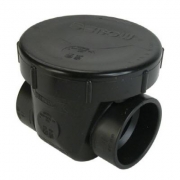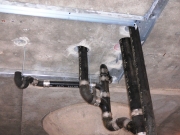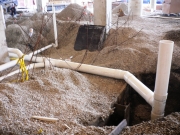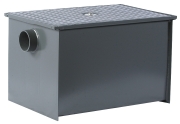Backwater Valves
Backwater valves are installed in the main sanitary waste piping line from the building to the sanitary waste line on the property, hence they are called in-line backwater valves. They are valves that are installed in your sewer line for the purpose of closing off the pipe when water tries to back up through it; they permit sewage to pass through in only one direction.





